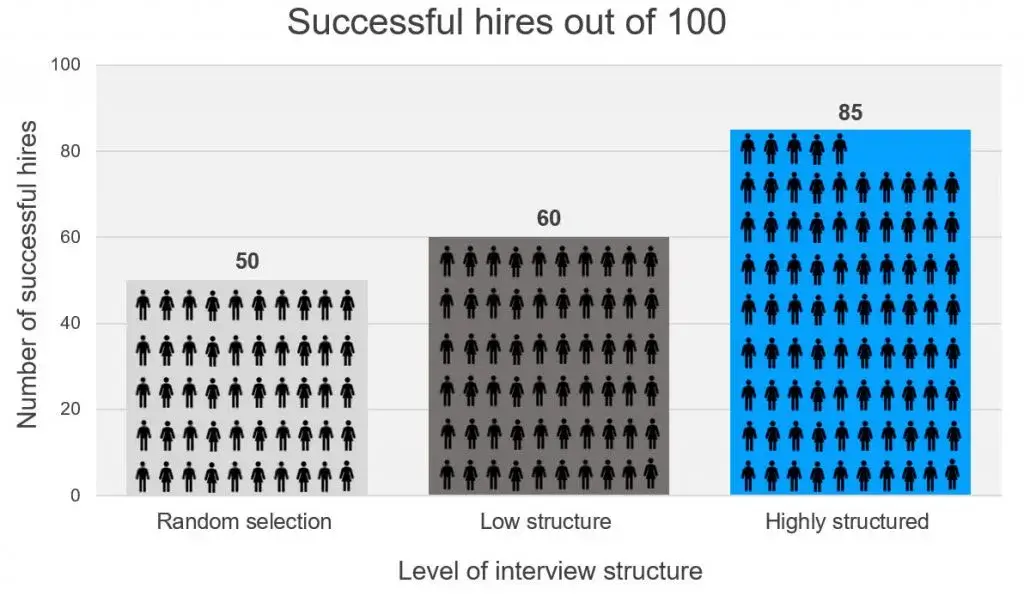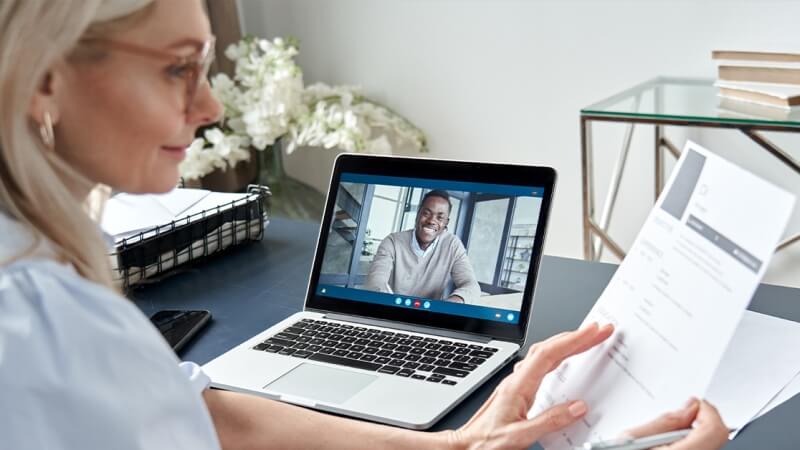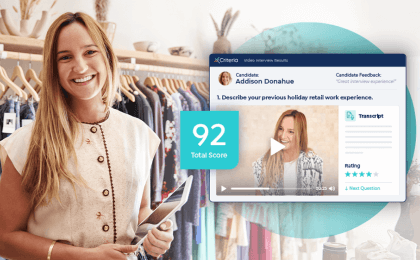Video interviewing remains highly popular in 2022 - more than half of companies we asked use it as part of their hiring process. But maybe you’re on the fence about whether a full video interviewing platform is right for your organization. Perhaps you think your organization is doing fine simply using live videoconferencing and face-to-face interviews to find suitable candidates. But did you know you could be unconsciously introducing sources of bias in the process? This bias can reduce your chances of choosing the best candidate for the role and can even harm your DE&I goals. One way to reduce hiring bias is to make your process more equitable for your candidates by using video technology to create a structured interview process.
Research shows that the more structure we can implement into job interviews, the better they become at predicting job performance. When we refer to “structure,” we’re referring to the interview process itself. This means things like asking the same questions to all candidates, asking questions in the same order, and having clear criteria for evaluating their answers. Highly structured interviews increase consistency from one interview to another, so it’s easier to compare and effectively determine the most suitable candidate for the role.
This added structure simultaneously reduces bias. Because you’re consistently evaluating candidates against specific criteria, you’re less likely to use common mental short-cuts to determine if someone is a good fit for a role. Additionally, structuring interviews reduces our tendency to superficially compare candidates to each other, which leads to inconsistent evaluation. At the end of the day, structured interviews mean better chances of hiring success on top of improving diversity outcomes.

Research shows that the number of successful hires increases as the level of interview structure increases. Let’s break it down. If we randomly chose someone from our applicant pool without interviewing them, we would make a successful hire about 50% of the time. You’d be leaving the chance of success tied with a coin flip. If we add some structure, like a conversational interview, you’d recruit 60 successful hires out of 100. This is slightly better than our random selection method, but not by much. These results are in sharp contrast to those you get with a highly structured interview process. When researchers used the most structured interview format – asking the same questions and using a highly descriptive rating scale – the successful hire rate jumped to 85 out of 100.
This research demonstrated that highly structured interviews are significantly better at predicting success in role compared to more free-form interviews. The features that make structured interviews more predictive also diminish biases in the process, ultimately enabling better diversity outcomes.
But even when we create highly structured interviews with clear evaluation rubrics, in-person interviews can still be clouded by unintentional bias. That’s because despite being as consistent as possible during “live” interviews (whether virtual or in-person) with candidates, your approach will vary from person to person. Evidence shows the impact of informal rapport building can alter the exact way a question is asked or how you reflexively respond to a candidate’s answer (for example, if you smile or praise their answer). Any deviation from one candidate to another can impact interview outcomes. Even interviewer attributes like gender and ethnicity can affect interviewee responses. So despite our best efforts, inconsistencies can creep in and reduce the predictiveness of our interview process in all but the most structured interviews.
To counter this, video interviewing technology can keep the experience consistent from one candidate to another. By using pre-recorded interview questions where the same individual asks question in the same way every time, you can insure that each candidate has an identical interview experience. Asynchronous video interviews also offer a great opportunity to demonstrate your employer brand. Since you have full control over the interview environment, you can be intentional about how interview questions are recorded and the diversity of individuals who ask these questions. At the same time, you’re giving candidates a feel for your organization’s culture and ethos.
Today’s video interviewing technology puts recruiters and hiring managers in the driver’s seat. The information gathered in interviews can be reviewed whenever works best for a busy schedule. These pre-recorded interviews also help to mitigate the impact an evaluator’s unconscious mood on candidate ratings: there’s evidence that evaluations can change depending on the mood of the evaluator. Adding this type of structure can even dispel concerns about the hungry interviewer who can’t concentrate on a candidate’s answers because a day packed with interviews has run into his lunch break. This technology enables recruiters to choose a time when they are best able to accurately review and rate interview responses.
No matter what interview format you choose, it’s important to be consistent between candidates wherever possible. Research shows the format of the interview – whether it’s in-person, live videoconferencing, or a pre-recorded video interview – affects the ratings assigned by evaluators, making it important to use the same interview format for all candidates.
Overall, high-quality research repeatedly demonstrates the benefits of using structured interview processes to improve prediction of job performance. You can leverage modern video interviewing technology to improve consistency between interviews, therefore making your interview ratings more reliable and ultimately increasing the chances of making a successful hire. Because video interviews give you increased control over the interview environment, they can be used to create highly structured interviews that reduce bias and improve hiring outcomes.





